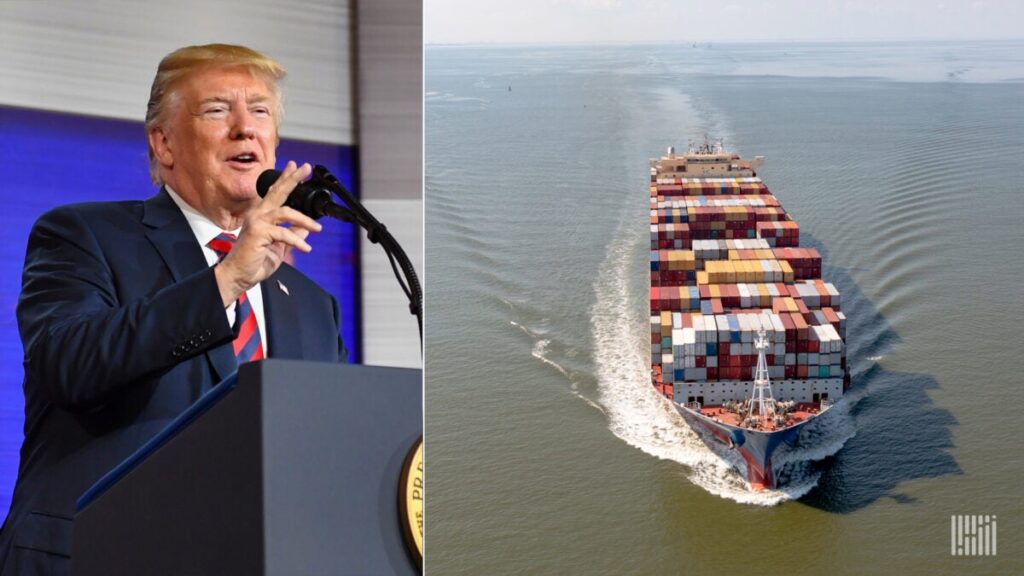The discourse surrounding tariffs often references the Smoot-Hawley Tariff Act of the 1930s, which is cited as a historical example of how such measures can adversely affect the economy. While its negative impact is well-documented, it’s essential to contextualize this within the vastly transformed global economic environment that exists today. When considering the proposed tariffs by President-elect Trump, one can argue that the contemporary landscape affords different outcomes compared to the 1930s, primarily due to significant advancements in technology, industrialization, and globalization.
One of the most noteworthy changes since the 1930s lies in the realm of transportation. Modern advancements such as jet travel, container shipping, and improved intermodal transportation systems have revolutionized logistics and freight movement. These innovations mean that goods can be transported across vast distances with unprecedented speed and efficiency, allowing global trade to thrive. The rapid movement of goods not only reduces shipping times but also enhances the overall infrastructure that supports international trade networks. Consequently, this efficiency diminishes the potential downsides that tariffs might impose on trade relationships, as markets can adapt quickly to changes.
In the context of industrial and economic development, the world has experienced remarkable progress since the Great Depression era. At that time, less than 30% of the global population had access to electricity. Today, nearly 91% of people worldwide enjoy electrical access, which correlates with increased industrialization and economic activity. This widespread electrification has created a broader and more competitive landscape for sourcing and manufacturing. In addition, emerging markets that have experienced rapid industrial growth present new opportunities for businesses affected by tariffs to reconsider their sourcing strategies, thus softening the impact of proposed trade barriers.
Should Trump’s proposed 60% tariffs on Chinese imports come to fruition, it could compel manufacturers to evaluate their positioning in the production landscape. While this may sound alarming, it also presents an opportunity for a strategic reshuffling of global manufacturing bases. Countries that can leverage competitive advantages may gain market share, allowing manufacturers to diversify their operations and mitigate risks associated with heavy dependence on single-country sourcing. This dynamic shifting of supply chains could lead to a more resilient global economy as businesses pivot towards markets that align better with their strategic goals.
The agricultural sector also showcases how globalization has changed the dynamics of sourcing strategies. The agricultural revolution has mitigated geographical and climatic constraints, allowing producers to access a wider range of sourcing alternatives than ever before, even in the face of potential tariffs. This flexibility enables companies to navigate the complexities of trade tariffs more adeptly, seeking optimal sourcing solutions without being overly reliant on any particular region. In essence, geography has become less of a limiting factor, allowing for richer market participation and diversified supply chains that are more robust against the detrimental aspects of tariffs.
Moreover, the introduction of real-time economic decision-making tools has fundamentally altered how suppliers and manufacturers respond to market changes. Globalization has fostered an environment where price negotiations can occur in real time, allowing companies to quickly pivot towards more cost-effective suppliers, regardless of tariffs. This responsiveness indicates that the presence of tariffs does not necessarily result in predetermined outcomes. Instead, the market’s ability to adapt can mitigate the potential negative impacts, encouraging innovative and flexible solutions that align with changing economic conditions.
Finally, the current technological landscape in manufacturing, bolstered by robotics and artificial intelligence, offers firms an edge in production efficiency. In contrast to traditional labor-intensive manufacturing, the automation of factories in the U.S. allows companies to produce goods more efficiently and economically. This evolution could enable U.S. manufacturers to compete favorably in the global market, even when facing tariffs. Additionally, tariffs may catalyze businesses to reconsider their supply chain partnerships, investing in domestic capabilities or seeking alliances with nations that align with U.S. strategic interests. Ultimately, the complexities introduced by tariffs can serve as a wake-up call, prompting quicker adaptations that prioritize long-term resilience over short-term gains.
In conclusion, while the historical implications of tariffs, as evidenced by the Smoot-Hawley Act, are significant, the contemporary economic landscape offers a fundamentally different set of tools and conditions. The acceleration of globalization, technological advancements, and evolved perceptions of national security lead to the potential for tariffs to drive innovation and realign sourcing strategies. Though challenges remain, today’s economic environment presents opportunities to foster domestic production, enhance competitive capacities, and build more resilient supply chains that reflect a new era in global trade. Therefore, the consequences of tariffs, as proposed today, are likely to diverge substantially from the catastrophic economic fallout experienced in the early 20th century.

